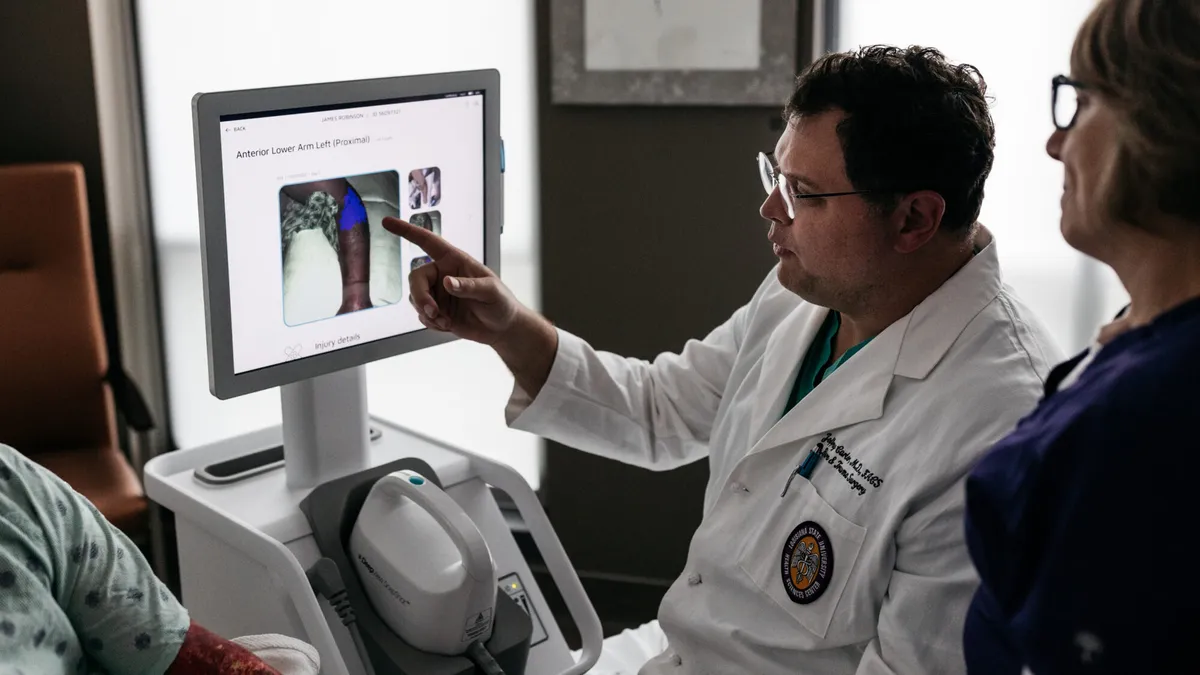GE reported a double-digit rise in profits at its healthcare unit Friday, with solid demand for products and services in the U.S. and China driving profit in the unit.
The profits come as GE is set to spinoff its healthcare unit over the next 12 to 18 months, part of a plan intended to narrow focus and improve performance. The separation will deprive GE of one of its most profitable, consistent divisions. That description of GE Healthcare was affirmed by the second quarter results, which featured a double-digit rise in profits.
The uptick brought GE Healthcare’s second quarter profits up to $926 million. GE Healthcare realized those profits from a quarterly turnover of close to $5 billion, giving the unit one of the highest profit margins of all the conglomerate’s divisions. The profit margin for the quarter came in at 18.6%, up one percentage point over the same period of 2017 on the back of volume growth and productivity gains.
GE CEO John Flannery on an investor call cast the performance of the healthcare unit “particularly strong.”
He signaled it would continue to deliver positive results in the coming quarters, saying he sees “a lot of opportunities for growth.” The healthcare and aviation units are offsetting weak performance at GE’s power division and are expected to continue doing so for the rest of the year.
Management at GE described the second quarter growth drivers in healthcare as broad and global, singling out the U.S. and China as countries delivering particularly positive results. Healthcare revenues in China were up 10%, powered by a 19% rise in MRI sales. Flannery attributed the strong MRI performance in China to the availability of a new product in the country. That made China the star performer among the emerging markets.
With 6% year-on-year healthcare growth, the U.S. was the standout country among the established markets. Europe, in contrast, was something of a laggard, with GE describing the 2% healthcare growth in the region as “modest.”
Globally, growth was split fairly evenly between healthcare systems and life sciences. GE’s imaging equipment and other medical devices fall under the “healthcare systems” banner, while the life sciences group covers its bioprocessing technologies.
Data on orders received by GE over the past three months suggest the healthcare division is poised to grow in the coming quarters. GE Healthcare received orders of $5.3 billion in the second quarter, up 7% year on year. The increase was driven by demand for both equipment and services. Orders for equipment, which accounted for 58% of all GE Healthcare bookings in the quarter, were up 7%, compared to a 6% rise at the service business.
Turbulent time
The results follow an unusually turbulent few months for GE. Over the past year, GE’s market capitalization has fallen by more than $100 billion, culminating last month in its removal from the Dow Jones Industrial Average for the first time in 110 years. In May, GE’s stock suffered its worst day since 2009 after comments by CEO Flannery sparked fears of another cut to the company’s dividend.
Against this backdrop, Flannery detailed his plan to improve GE’s fortunes. The centerpiece of the strategy is the separation of GE Healthcare from its parent company. GE plans to spin off the unit into a standalone healthcare business with a portfolio of medical imaging, data analytics and patient monitoring devices over the next 12 to 18 months. At the time of Flannery’s announcement in June, Bloomberg estimated the standalone healthcare business could be worth up to $70 billion.
That makes GE Healthcare a huge business by most benchmarks but a relatively small organization compared to its parent company. Separating from the broader business could unlock opportunities for GE Healthcare. In a June statement GE Healthcare CEO Kieran Murphy cited “greater flexibility to pursue future growth opportunities, react quickly to changes in the industry and invest in innovation” as ways his unit will benefit from the split.
GE Healthcare is also undergoing some internal changes, albeit of a less dramatic nature than the upcoming split from the conglomerate. In April, GE Healthcare agreed to sell a healthcare software unit to Veritas Capital.
On the second quarter conference call, GE CFO Jamie Miller said the healthcare unit is “making progress on portfolio actions.”
The extent to which the slimmed-down GE Healthcare can realize the benefits envisaged by Murphy will only become clear in the years to come. For now, the healthcare unit can advance toward the anticipated split boosted by quarterly results that suggest it is in better shape than the broader company it will leave behind.


















